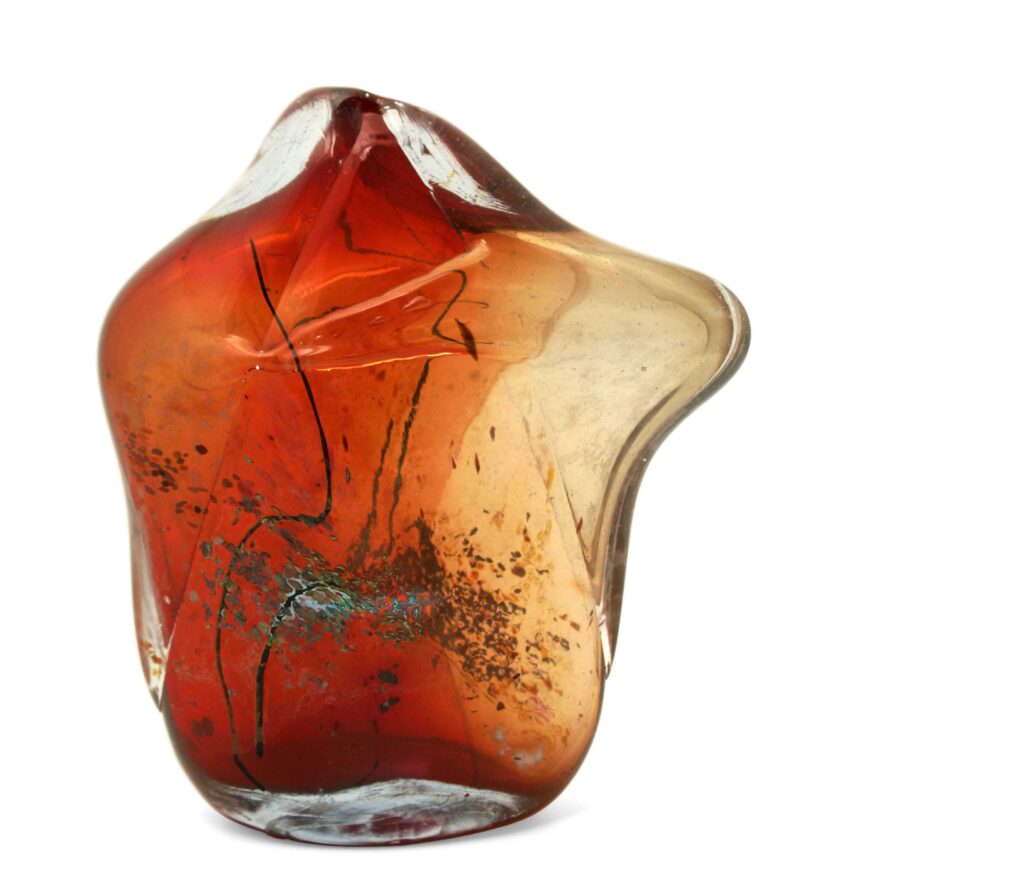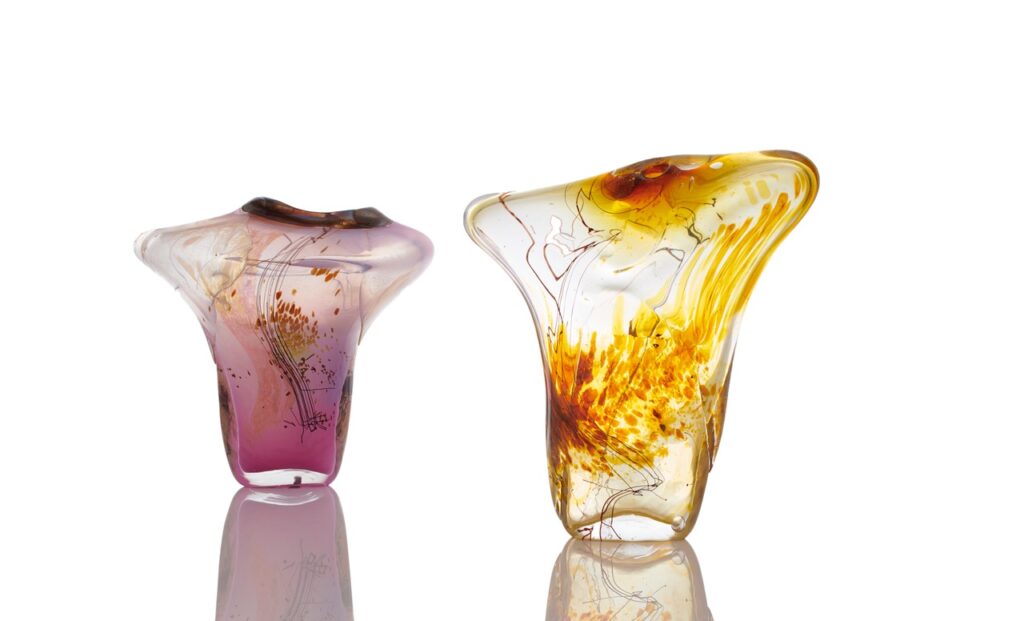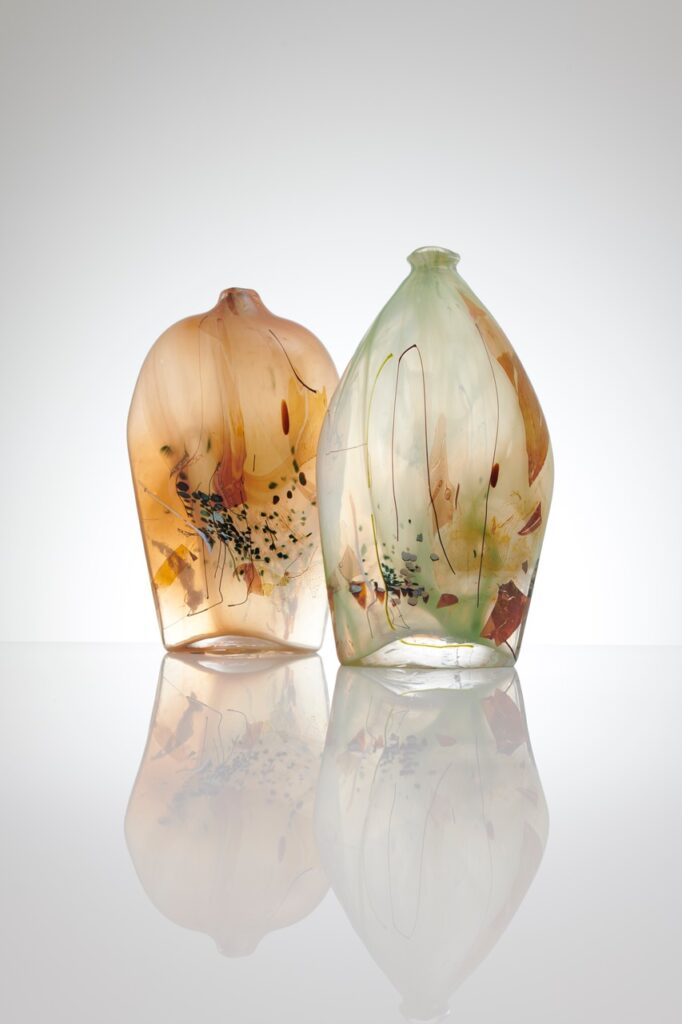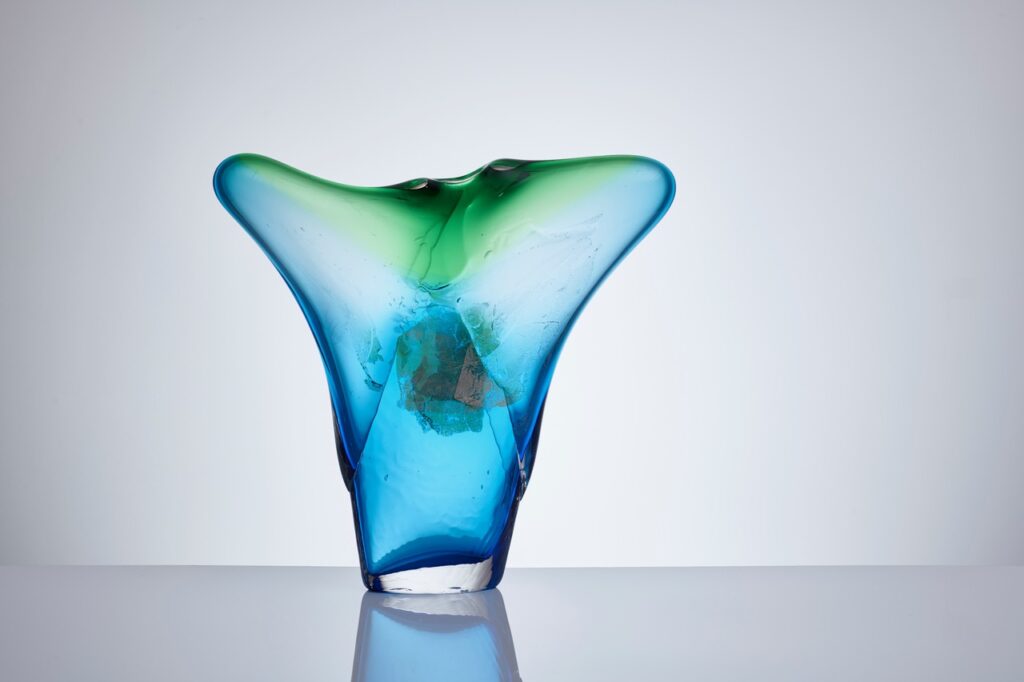It’s not often something really and truly great comes out of the blue at you. It happened to me recently when a dealer colleague of mine was having a clearout of his collection and contacted me about a glass vase by Sam Herman that he had bought on the South Coast of England nearly three decades ago. I bought it instantly.
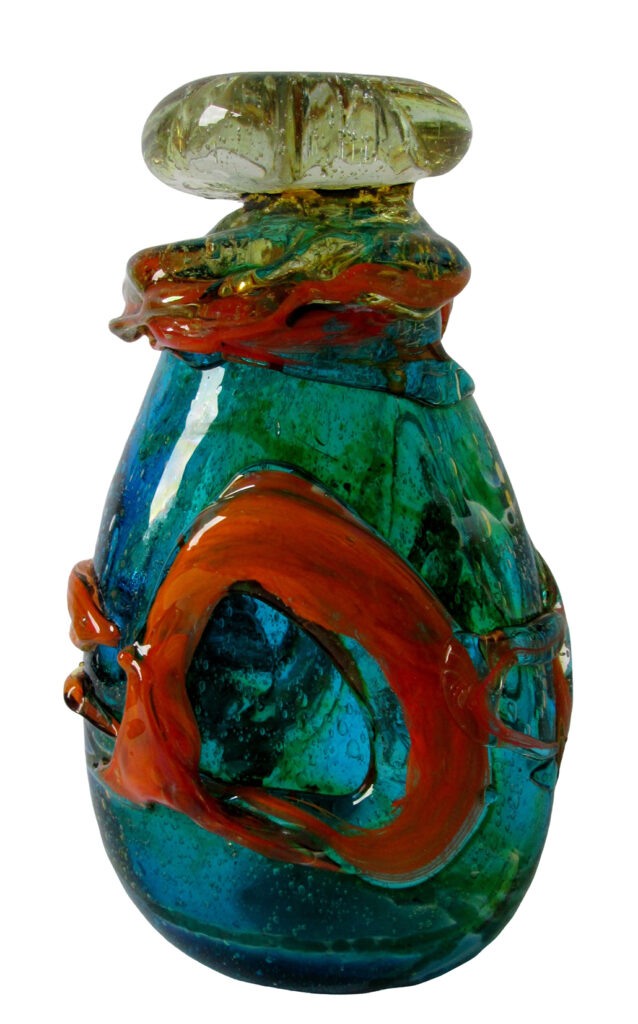
Despite what you may think at first glance, it immediately struck me as something special. The rudimentary form and decoration shows an artist experimenting with and learning to use the medium of glass. Experimental, spontaneous, and fluid. You can almost feel the increasing solidity of the cooling molten glass in the way the neck is handled. It’s signed and dated ‘London 1967’. At this time, Sam was Research Fellow, then Head of the glass department, at the Royal College of Art in London. A graduate in sculpture and anthropology, he was finding himself as an artist in glass, and teaching himself – and others – how to handle this mercurial and magical material. Compare it with the much later works below to see what I mean. It combines colours (challenging at that time), and was made using silver chloride, a material Sam popularised and that became core to studio and art glass design of the 1960s-80s.
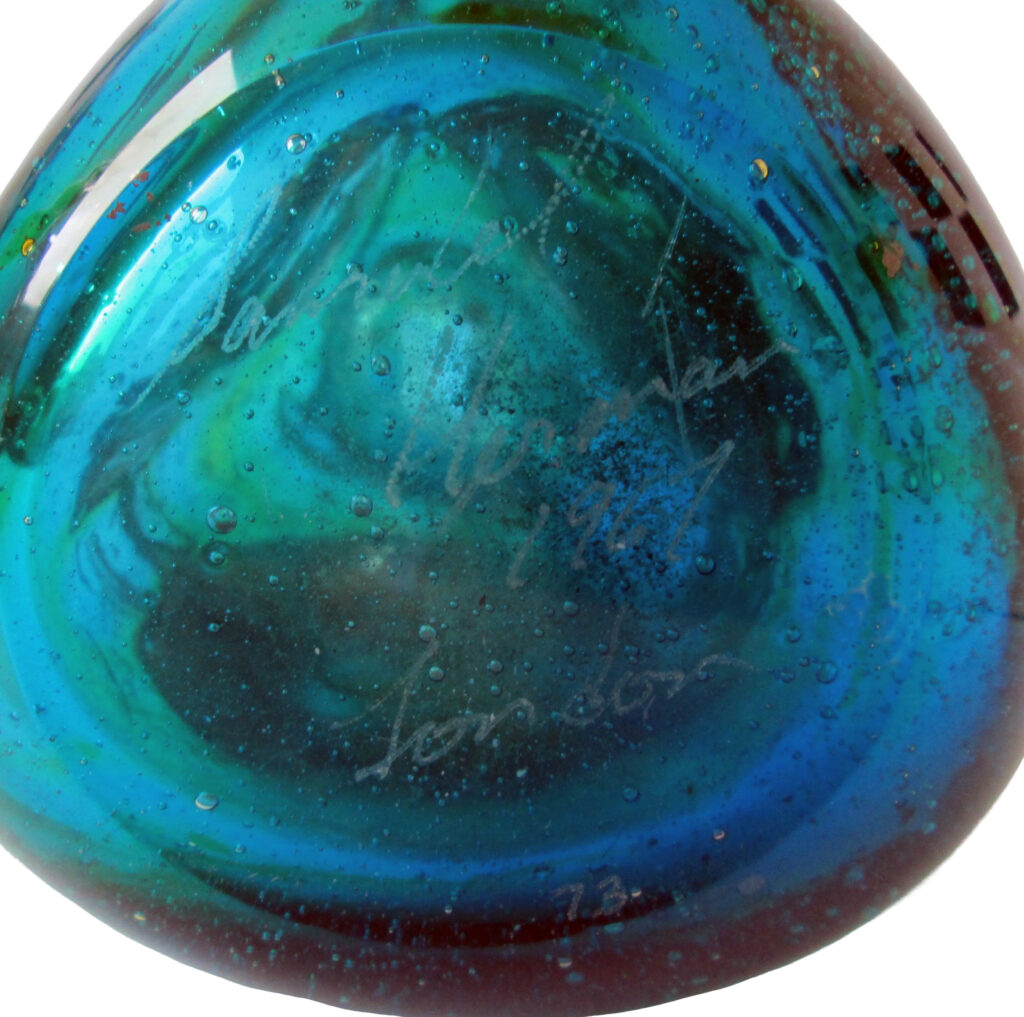
It’s also numbered 73. That’s fascinating, as Sam told me that he didn’t start numbering his work at No.1 at the Royal College of Art, and instead chose a random number to start from. He also said that he made fewer than 50 pieces himself across 1967 due to the pressures of his teaching role. Talking to a couple of other collectors, and looking through my archive, I couldn’t find an lower number for pieces dated 1967 – so therefore an earlier piece. This low number and its appearance makes this almost certainly one of the earliest pieces of glass he made at the RCA, and thus outside the US where he studied. It also bears some similarities to the work of Michael Harris at Mdina Glass – Harris learned how to make glass with Sam before he left in late 1967 to found Mdina Glass. This really is a rare, early, and important survivor as one of the earliest pieces of studio glass made by an internationally renowned glass artist outside the US.

Who is Sam Herman?
Samuel J. Herman (1934-2020) was one of the founding fathers of the international studio glass movement, and one of the most important and innovative names in 20th century glass design. The effects of his work and teachings are still felt today – without him, contemporary glass design, studio glass, and glass art would not be in the vibrant and progressive state that it is in today.
What did he do?
Summing up Sam’s varied and influential career in brief is difficult. But to illustrate what I’ve just said, it needs to be done. He was at the very genesis of the studio glass movement, as a student of Harvey Littleton at the University of Wisconsin from 1963-65. In 1965, he won a Fulbright Scholarship to explore cold-working techniques under Helen Monro-Turner at the Edinburgh College of Art. At an exhibition of new studio glass produced in America which he organised in Edinburgh in Spring 1966, he was invited by David, Marquess of Queenberry to become a Research Fellow at the Royal College of Art in London. There, in Autumn 1966, he built the first ‘small furnace’ in the UK and began to teach and encourage the first wave of studio glass artists outside the US.

In Summer 1967, he became a Tutor and Head of Glass at the college, a position he held until 1974. In 1969 he co-founded The Glasshouse with Graham Hughes, to provide graduates in glass and fledgling glass artists with both a place to work, and a sales venue for their work. In 1971, over 60 pieces of his work were shown in a dedicated exhibition at the Victoria & Albert Museum in London. This made Sam the first first living glass artist to have such an exhibition at a major international musem. In the same year, he began a collaboration with renowned Belgian glass company Val St Lambert.
Australian Adventures
In 1974, he was invited by the government of South Australia to move there to found and run the glass department of The Jam Factory, where he awakened and led another wave of new glass artists and designers. All the while, he was exhibiting at hundreds of exhibitions across the world and travelling internationally from Japan to the Netherlands and the US to spread enthusiasm for, and skills in, the new studio glass techniques.
In 1979, he returned to London, and founded his own studio in Lots Road, Chelsea, to produce his unique artworks in glass exploring colour, form, and the human form there until 1984. Following this, he moved back into exploring the mediums of sculpture and painting, before returning to glass briefly in 2007 and for a few years after 2012, by which time he had become internationally renowned for his work and achievements in teaching.
International Importance
As I write this article, this reputation is backed up by the fact that the Victoria & Albert Museum in London currently have five pieces of his glass on display in their Glass Room. Few other glass designers and artists have this quantity of work on display there at one time. Furthermore, his work is in the collections of The Metropolitan Museum of Art (New York), The Smithsonian (Washington DC), The Art Institute of Chicago, the Corning Museum of Glass (New York), the Glasmuseum (Frauenau, Germany), the Fitzwilliam Museum (Cambridge, England), and the National Gallery of Victoria (Australia).
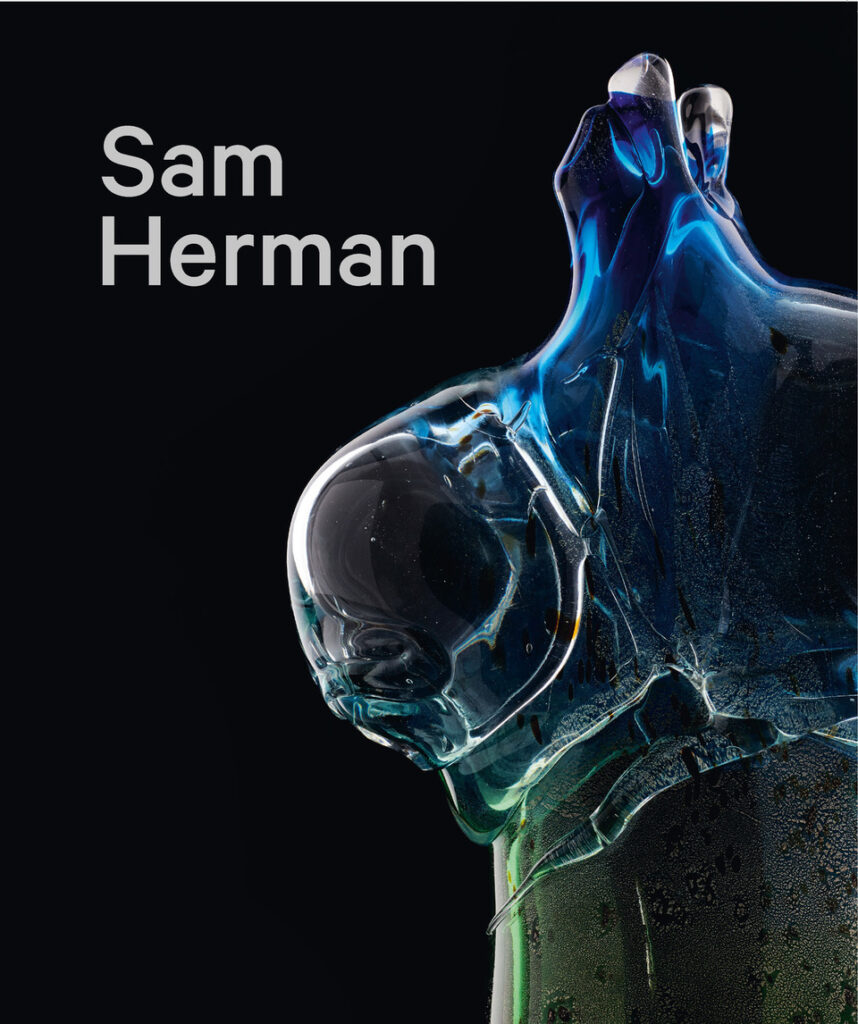
How do I learn more?
2019 saw the release of a monograph book on Sam’s life and work, ‘Sam Herman’, edited by Rollo Campbell, and published by Lund Humphries. You can find out more about the book by clicking here. Contributors include art historian Lucy Abel Smith, glass artist Michael Boylen, educator Dr Greg Votolato, curator Michael Regan, David, Marquess of Queenberry, and me. The chapters on his art in glass were written by me, based on my knowledge of his work since 2004, meeting him in 2006, and my extensive interviews with him for the book. You can also look at Sam’s own website by clicking here.


